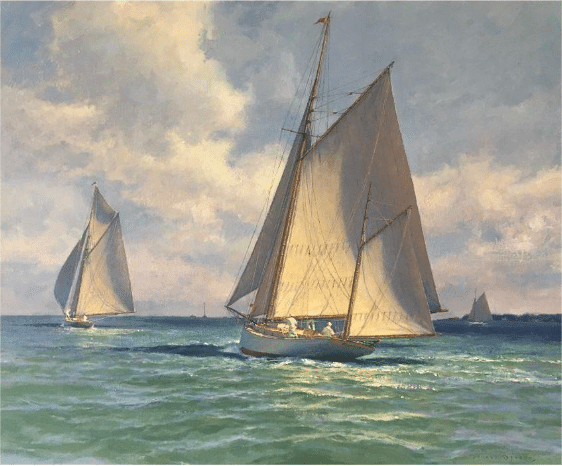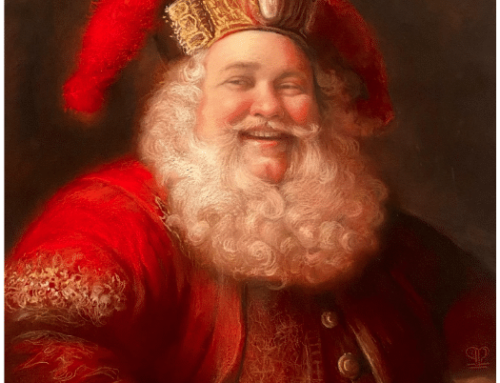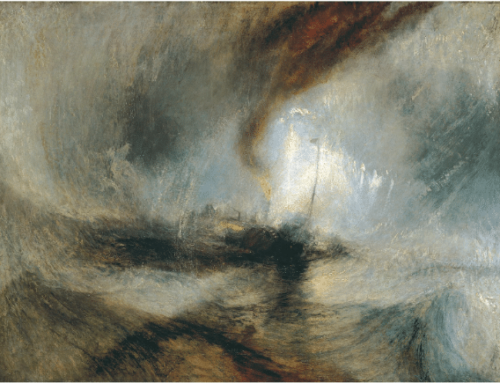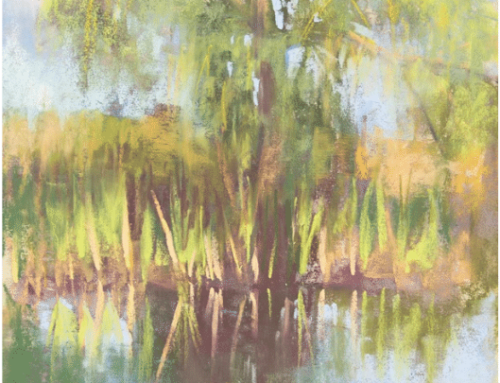Don’t apologize for your work. Because actually, failure is good for you – and you know it!
Obviously critiques of your work are, by nature, uncomfortable. You look at everybody else’s paintings, you feel that hollow in the pit of your stomach, and now you’re “putting it out there” for everyone to say the unthinkable out loud! The tendency is to disarm “the enemy” by pretending you don’t have a stake in it.
You’re not fooling anyone!
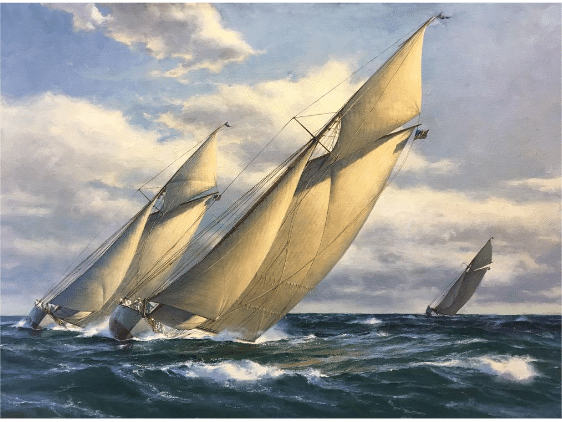
Donald Demers, Aurora’s Wind, 24×36 oil
Think about how you feel when you experience someone apologizing about everything wrong or bad about their painting. You kind of want to grab them by the shoulders and say, “Look, I get it. But no one’s judging – we just want to help.”
It’s not an Ultimate Judgment on you! Who on earth is qualified for such a thing?!
It’s not even a judgment about talent or being gifted or whatever nonsense that voice in your head is saying. Being an artist is less about what you’ve done or not done and more about being inspired and doing something about it.
If you’re willing to play the long game, painting is all about potential, passion, and commitment. And who can judge something like “potential”? No one knows what anybody’s capable of until they do it. So do it you must.
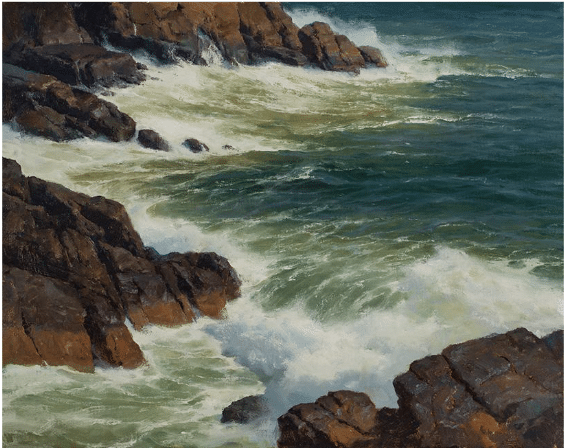
Donald Demers, Acadian Surf, 16 x 20 in. oil
there’s no such thing as a failed painting: it’s all grist for the mill. Most of the time, we’re critiquing our own work unfairly anyway, by letting worries about being judged prevent us from seeing the things that ARE good about it.
Some workshop leaders flat-out ban apologizing for “bad” work. Everyone’s in the same boat, after all! Everyone’s nervous about what other people are going to say about their work. Everyone’s working under pressure, out of their comfort zone (they’d better be, some would say, or the teacher isn’t doing their job!). But the ones who really want to learn put being open to a valid critique above wanting to be told how good they are (though who doesn’t want that, let’s be honest). Approach critiques as you would a semi-distorted mirror; ask for the kind of criticism you want, and always be looking for what you can’t see on your own – especially what’s in there somewhere that’s authentically yours (not just “good” or “bad”) about your work – ask the group what they think your painting says about the person who made it (you might be very surprised by the answer!).
There’s just no way to get good at painting without making bad paintings. Every painting is one more length of pavement on a highway stretching far in front of and behind you.
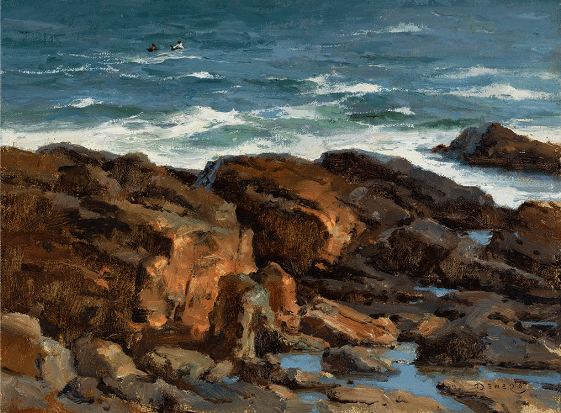
Donald Demers, A Rocky Edge, 9 x 12 oil
Someone once told me you have to have a mile of canvases laid end to end behind you before you get to paint a good one. I’m not so sure (hey, sometimes you get lucky!) but the principle’s true. It takes painting(s) to make paintings.
Feeling dissatisfied with your work is normal and only means you have enough insight to see that you’re not yet reaching your full potential – but you’re on your way. That’s why feeling dissatisfied with your work is something to embrace, not something to run away from. Everyone always has more to learn.
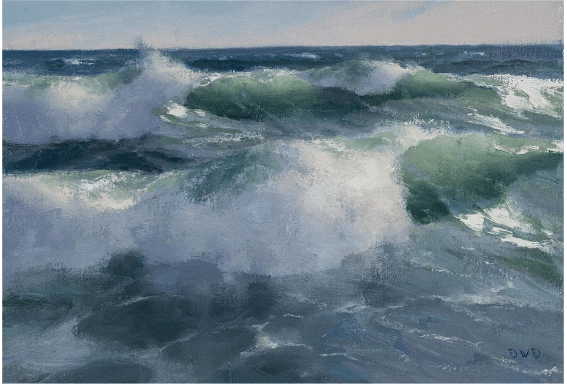
Donald Demers, Upon the Breakers, 7 x 12 in oil
One of the great masters of Japanese painting said on his death bed that if he just had another 10 years maybe he’d learn how to paint! Clearly he was joking!
“Painting is a lifetime adventure,” our publisher Eric Rhoads is fond of saying. “We are learning every day, for the rest of our lives, and we are always going to be challenged to the next level.”
So, don’t apologize for your paintings. Instead, embrace your failures as a learning moment, and work on the things you know need help.
But you know all this already. The only thing to do about it is schedule your next painting session – and stick to it.
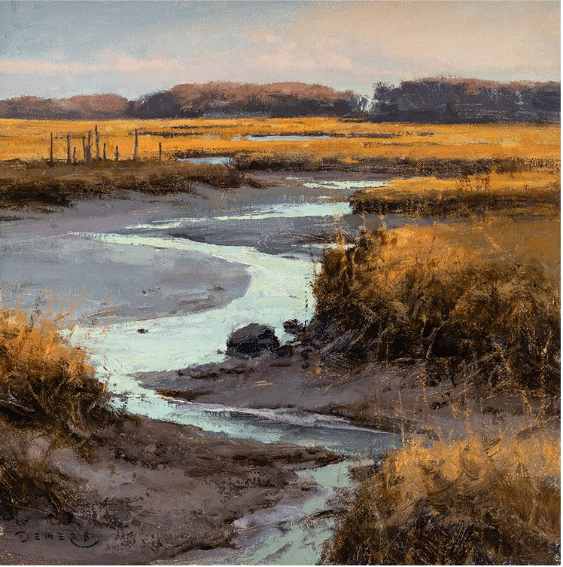
Donald Demers, Tidal Tracings, 10 x 10 in oil
The paintings in this edition of Inside Art are all by Donald Demers. Donald haw a strong affinity for maritime and seascape painting. As a crewmember aboard many traditional sailing vessels including schooners and square-riggers, he continues to be an avid sailor.
His professional career began as an illustrator and expanded into the field of fine art. His illustrations can be found on many book covers and in national publications such as Reader’s Digest, Sail Magazine, Field & Stream, Sports Afield, Yankee, and National Geographic.
Demers’ paintings have been featured in a number of publications including American Artist magazine, Artist magazine, Plein Air magazine, Fine Art Connoisseur , Art and Antiques, Yachting magazine, Nautical Quarterly, Nautical World, Offshore magazine, and Maine Boats and Harbors.
Donald teaches his techniques for composing and painting his breathtaking, detailed paintings in a bestselling teaching video titled Donald Demers: Mastering the Se, which you can purchase as a DVD or a streamed video here.

